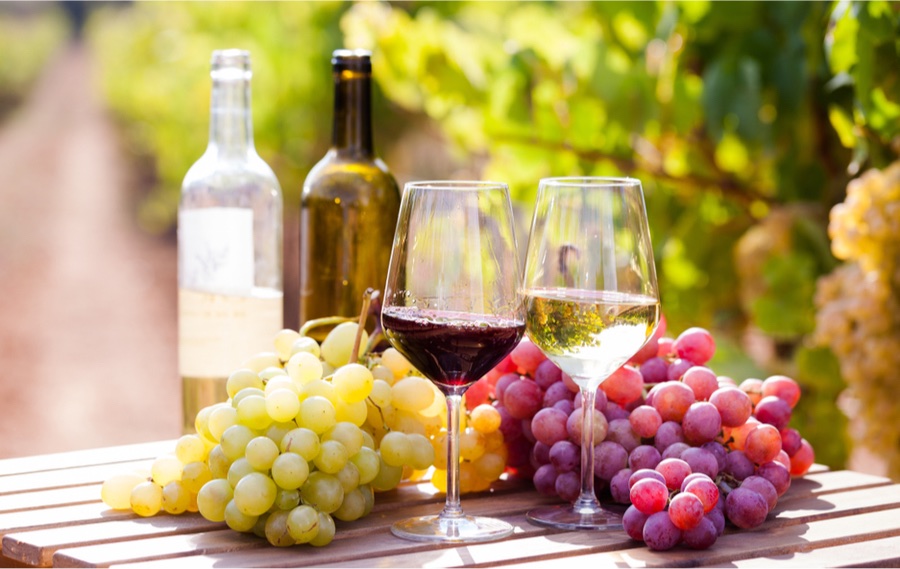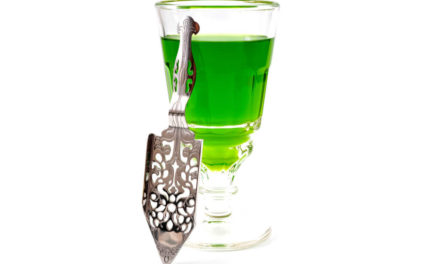I’m sure you know that there is white wine and red wine, right? But did you know that white wine and red wine are just two types of wine that belong to the same family? In the article French wine basics: Wine classification according to the French we talked about wine classification based on specifications, quality, and origin. But wines can also be classified according to their physical characteristics.
What types of wines are there in France?
When classifying wines by physical characteristics we can first classify them in big families which are: still wines, effervescent wines, and fortified wines (Vin muté). We will be describing a little more the differences of each one of them below.
What types of still wines are there in France?
Being the best-known family or the most popular classification, still wines are subdivided into red, white, and rosé wines. The difference between one and the other goes beyond their colour. The physical characteristics, aromas and sensations will be totally different since the colour of the wine is determined both by the grape used and by the manufacturing processes.
In other words, red wines are made from black or grey grapes. And white wines are generally the opposite, i.e., white grapes are used. Now, this is not always the case for white wines, as sometimes the wine is made from black grapes, but interestingly, certain varieties of these are black only at the skin level, but inside they are white, so wines produced from these types of grapes, are obtained by not macerating using the skin as opposed to how it would normally be done for a red wine.

You may ask, “Use the skins? The fact is that during the winemaking process, after harvesting the grapes, they go through a crushing process where the must is created, which is nothing more than the juice of pressed grapes. In the case of red wine, during maceration, the time in contact between the must and the solid parts (pips and skins) lasts several days. And as mentioned above, for white wine this stage simply does not take place.
This variation in the process will result not only in a different colour of the wine, but also, in addition to aromas and other characteristics, it will transfer its tannins, which give red wine its characteristic astringency. Now you know where this sensation comes from in red wine and the reason why it is non-existent or almost non-existent in the case of white and rosé wines. By the way, an interesting fact about tannins is that they help the preservation of the wine, that is why red wines can be aged longer than white wines, it is worth mentioning that the more a red wine is aged, the less the sensation of astringency will be, as it decreases as the wine matures.
What colour grapes do rosé wines come from?
In the case of rosé wine, only black grapes are used, always with their white interior. White and red grapes are not mixed as we would quickly think (on the contrary in the production of Champagne this is authorised). But the contact time of the must with the solid parts of the grape (skins and pips) will be much shorter compared to red wine, resulting in its specific colour and characteristics.
- White wine: Within the classification of white wines, we can again make a subdivision between dry and sweet wines, which as you can see in the list below is basically determined by the level of residual sugar found in them. This is achieved thanks to different methodologies when harvesting the grapes, for example, one of the simplest methods is to vary the time of harvest, the longer the grapes are left to ripen in the vineyard, the more sugar they will have and vice versa.
- “Sec”:
- “Sec”: 0 – 4 grams of residual sugar per litre.
- “Demi-sec”: 4 – 20 grams of residual sugar per litre.
- “Doux”: Within this category, they include types of wines that you have probably heard of, such as “vin de glace” or “vin de paille”.
- “Moelleux”: 20 – 45 grams of residual sugar per litre.
- “Liquoreux”: +45 grams of residual sugar per litre.
- “Sec”:
- Rosé wine: Although Rosé wine is technically red wine, due to the variations in maceration as mentioned above, in France Rosé wine is generally considered as a third type of wine as it has its own characteristics different from white and red.
- Red wine: Technically all wines, including rosé, are divided into “sec” or “doux”. However, it is rare to speak of a “moelleux” red wine, for example. In the case of red wine, three main factors allow us to classify it into four categories: the level of tannins present, the level of alcohol and the acidity of the wine. In other words, we will be guided above all by the three main sensations that we will be able to taste. Unctuousness, astringency, and finally acidity. This results in the following classifications:
- “Vin Tannique”: A wine falls into this category if the wine is high is astringency, meaning that it is a wine high in tannins.
- “Vin Onctueux”: This category is also easy to identify. A wine falls into this category if the wine is high in unctuousness, which means it is a wine high in alcohol.
- “Vin Fruité”: To fall into this category the wine is dominantly acidic, with low tannins and low unctuosity.
- “Vin fin”: This is a balanced wine where the wine has present but not dominant acidity and at the same time has non-dominant tannins and low unctuousness.
What types of effervescent wines are there in France?
The effervescent wine in contrast to still wine is a wine that contains CO2 giving it a bubbly mouthfeel like a fizzy soda while providing differences in taste. These in turn are subdivided into:
- “Vin perlant”: 1 – 2 grams of CO2 per litre.
- “Vin pétillant”: 2 – 4 grams of CO2 per litre.
- “Vin mousseux”: above 4 grams of CO2 per litre.
Within this category are the famous Champagne wines. As you know, to be called Champagne, a wine must come from this French region, as it has a protected appellation of origin. But if another wine-growing region wishes to produce the same type of wine by means of the same traditional methodology of CO2 injection, it will be called “Crémant”.
At the same time, effervescent wines can be classified into different categories, which are determined by the amount of residual sugar per litre. According to the Comité Champagne.
- “Brut nature”: less than 3 grams of sugar per litre.
- “Extra Brut”: between 0-6 grams of sugar per litre.
- “Brut”:, less than 12 grams of sugar per litre.
- “Extra Dry”:, between 12 – 17 grams of sugar per litre.
- “Sec”:, between 17 – 32 grams of sugar per litre.
- “Demi-sec”:, between 32 – 50 grams of sugar per litre.
- “Doux”:, more than 50 grams of sugar per litre.

What types of fortified wines are there in France?
Fortified wine (Vin Muté) is so called because in order to force the preservation of residual sugar and at the same time maintain high alcohol content during the fermentation stage, alcohol, spirits or distillates of viticultural origin are added, according to (OIV). Fortified wines include the following:
- “Vin de Liqueur”: It is obtained by adding eau de vie before fermentation. Therefore, the final alcohol is basically given by the eau de vie and the grapes provide the sugar.
- “Vin doux naturele”: It is obtained by adding eau de vie during fermentation so that the final alcohol obtained is a mixture of alcohol coming from the grapes and the added alcohol.
I’m already in the mood for wine, cheers!





